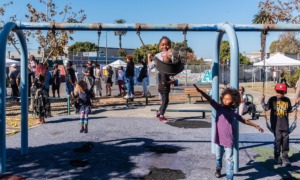Author(s): The National Juvenile Defender Center
Published: November 2016
Report Intro/Brief:
“Defend Children: A Blueprint for Effective Juvenile Defender Services details how children are arrested, prosecuted, and too often incarcerated without attorneys at their side. Youth, and disproportionately youth of color, are swept into a system that criminalizes normal childhood behavior and deliberately withholds rights and protections that children not only deserve, but are constitutionally entitled to receive. Our most vulnerable defendants are the least likely to have effective attorneys in juvenile courtrooms.
The Blueprint is informed by thousands of hours of juvenile court observation, assessments of state juvenile defense systems that measure access to and quality of children’s legal representation, and invaluable observations and expertise from our community of defenders, researchers, and advocates.
Juvenile court has evolved over the last 100 years to impose harsh, life-altering penalties, and yet the justice system continues to treat juvenile court as a training ground for new and inexperienced attorneys. It’s long past time for every jurisdiction to have the resources, specialized knowledge, and leadership to fulfill the constitutional promise of counsel for all youth. The Blueprint proposes solutions to the ongoing crisis in juvenile defense; illustrates its disparate impact on historically oppressed communities; and highlights innovative and replicable programs across the country that are improving children’s access to justice.
Defend Children Recommendations:
- Champion, Uphold, and Fund Children’s Right to Counsel
- Ensure Meaningful Access to Counsel Throughout the Delinquency Process
- Implement Strong, Well-Resourced, and Specialized Juvenile Defense Systems
- Eliminate Racial and Ethnic Disparities
- Attract and Retain New and Diverse Talent to the Field of Juvenile Defense
- Protect the Rights of Youth Who Face Additional Discrimination and Violation of their Constitutional Rights
- Fund and Implement Mechanisms to Collect Data, Conduct Assessments and Court Observations, and Initiate Evaluation and Research.”































